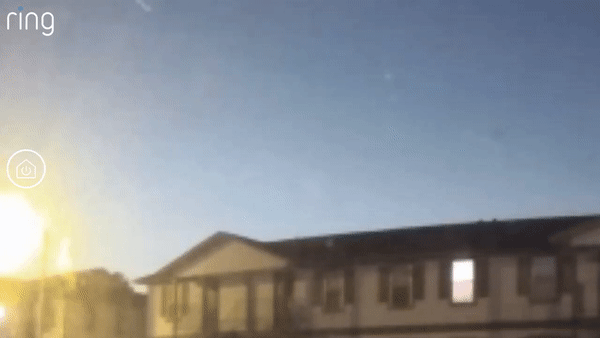Fireball streaks across North Texas, creating light show and sonic boom
Hundreds of people witnessed the flash.

A fireball streaked across North Texas last night, leading to several hundred witness reports of a bright flash and sonic boom.
The celestial drama occurred around 9 p.m. local time on Sunday (July 25), according to CBS Dallas-Fort Worth. The nonprofit American Meteor Society (AMS) has since recorded 213 reports of the fireball, including three videos. The witnesses were mostly in northeastern Texas, but some reported seeing the fireball above Oklahoma, Missouri, Arkansas and Louisiana.
Videos of that fireball show a large object streaking across the sky for a few seconds. Most people who reported seeing the fireball estimated that it lasted between 3 and 4 seconds. About 14 people who saw the object said it made a sound as it streaked through the sky.
A fireball is any meteor that is about as bright as the planet Venus in the evening sky, according to the AMS. As this NASA map shows, fireballs occur around the world with regularity. These objects can start fairly large, according to NASA, measuring more than 3 feet (1 meter) in diameter before the friction of the atmosphere begins burning them up. They don't typically survive to reach the ground, though some larger fireballs might explode into fragments that can be found by meteorite hunters. Fireballs that explode are known as bolides.
The ubiquity of doorbell cameras, cell phones and dash cams means that many fireballs are now caught on video, such as one that lit up the sky above Tennessee last summer and a bright green one that surprised researchers aboard a vessel in the Tasman Sea in the fall. The fireball that fell over Texas was preceded just a few hours by a large meteor exploding over Norway.
In March, a bolide large enough to be seen during the day rocked England, Wales and northern France with a sonic boom. A bolide over England in February sprinkled bits of meteorite over a large area, including one family's driveway.
Thousands of small meteorites hit the Earth each year, though most fall unnoticed into the ocean or into unpopulated regions. Many thousands more bits of rock and space dust burn up completely in the atmosphere, visible only as meteors. The next best opportunity to see meteors is in August, when Earth will pass through the lingering debris left by the Swift-Tuttle comet, creating the annual meteor shower known as the Perseids. These meteors are too tiny and fragile to reach Earth, but they create a light show of up to 100 shooting stars per hour.
Sign up for the Live Science daily newsletter now
Get the world’s most fascinating discoveries delivered straight to your inbox.
Originally published on Live Science

Stephanie Pappas is a contributing writer for Live Science, covering topics ranging from geoscience to archaeology to the human brain and behavior. She was previously a senior writer for Live Science but is now a freelancer based in Denver, Colorado, and regularly contributes to Scientific American and The Monitor, the monthly magazine of the American Psychological Association. Stephanie received a bachelor's degree in psychology from the University of South Carolina and a graduate certificate in science communication from the University of California, Santa Cruz.
Most Popular

